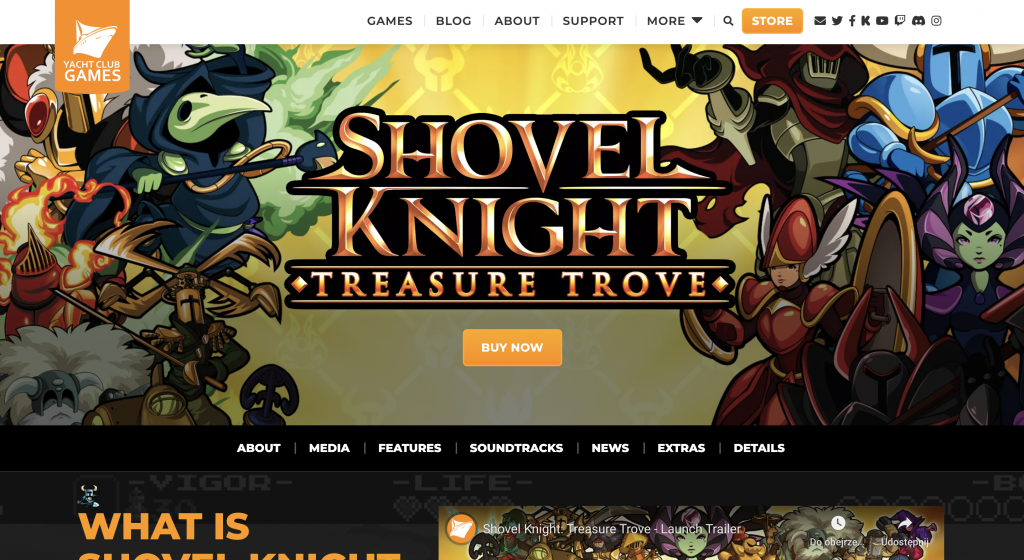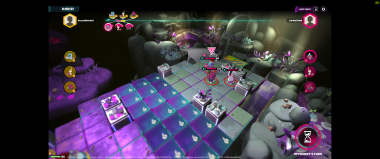Designing a game’s user interface (UI) or heads-up display (HUD) is a crucial part of game development. The UI/HUD is what connects the player to the game world and provides them with essential information and controls. A well-designed UI/HUD can enhance the player’s experience by making it easier to navigate, access information, and interact with the game. In this article, we will provide a step-by-step guide to designing a game’s UI/HUD and showcase ten great examples of in-game UI/HUDs for indie game developers.

Step 1: Understand the Game Mechanics and Goals
The first step in designing a game’s UI/HUD is to understand the game mechanics and goals. The UI/HUD should be designed to support and enhance the gameplay. It should provide the player with the necessary information and controls to achieve the game’s objectives.
For example, in a first-person shooter game, the UI/HUD should include information about the player’s weapon, ammo count, health, and objectives. In a strategy game, the UI/HUD should display information about the player’s resources, units, and objectives.
Step 2: Choose a Visual Style
The next step is to choose a visual style for the UI/HUD. The visual style should be consistent with the game’s art style and theme. It should also be clear and easy to read.
For example, in a fantasy game, the UI/HUD may use a medieval-inspired font and iconography. In a sci-fi game, the UI/HUD may use a futuristic font and sleek, minimalistic design.
Step 3: Determine the UI/HUD Layout
The layout of the UI/HUD is crucial for ensuring that the player can access the necessary information and controls quickly and easily. The layout should be intuitive, and the most critical information should be displayed prominently.
For example, in a racing game, the speedometer and lap counter may be located in the top left corner of the screen, while the player’s position in the race may be displayed in the top right corner.
Step 4: Decide on UI/HUD Elements
The UI/HUD elements are the different components that make up the UI/HUD. These may include menus, buttons, icons, and text. It is essential to choose the right UI/HUD elements to ensure that the player can navigate the game easily.
For example, in a puzzle game, the UI/HUD may include a hint button that the player can press to receive a clue about the puzzle. In a platformer game, the UI/HUD may include a jump button and a menu button to access different game modes.
Step 5: Choose Colors and Fonts
Colors and fonts can affect how the player perceives the game and the UI/HUD. The colors and fonts used in the UI/HUD should be consistent with the game’s art style and theme.
For example, in a horror game, the UI/HUD may use dark, ominous colors and a gothic font to create a creepy atmosphere. In a cartoon game, the UI/HUD may use bright, cheerful colors and a playful font to create a fun atmosphere.
Step 6: Use Animation and Effects
Animation and effects can add depth and interactivity to the UI/HUD. They can also provide visual feedback to the player, making it easier to understand what is happening in the game.
For example, in a fighting game, the UI/HUD may use animation to show the player’s health bar decreasing when they take damage. In a racing game, the UI/HUD may use motion blur effects to simulate the speed of the car.
Step 7: Test and Refine
Once the UI/HUD has been designed, it is essential to test it thoroughly to ensure that it is easy to
navigate, read, and understand. Playtesting with a focus group or beta testers can help identify areas that need improvement. Based on feedback, the UI/HUD can be refined to improve usability and accessibility.
Tools for Designing UI/HUD
There are several tools available to game developers for designing UI/HUD. Some popular tools include:
- Adobe Photoshop: A popular tool for creating UI/HUD elements and icons.
- Adobe Illustrator: A tool for creating vector graphics and icons for the UI/HUD.
- Sketch: A vector graphics editor designed for UI/UX design.
- Figma: A web-based tool for designing UI/UX and creating prototypes.
- Unity: A game engine that includes a UI/HUD designer.
- Unreal Engine: A game engine that includes a UI/HUD designer.
- Inkscape: A free and open-source vector graphics editor.
Ten Examples of Great In-Game UI/HUD for Indie Game Developers

- Hollow Knight: This game uses a minimalistic UI/HUD that is consistent with the game’s art style. The UI/HUD elements are located at the bottom of the screen, allowing the player to focus on the game’s intricate environments.
- Stardew Valley: This game uses a simple and intuitive UI/HUD that displays the player’s resources, calendar, and inventory. The UI/HUD elements are organized into different tabs, making it easy to navigate.
- Ori and the Blind Forest: This game uses a beautifully designed UI/HUD that complements the game’s art style. The UI/HUD elements are located at the bottom of the screen, making it easy for the player to access important information.
- Celeste: This game uses a minimalistic UI/HUD that is easy to read and understand. The UI/HUD elements are located in the top left corner of the screen, allowing the player to focus on the game’s challenging platforming levels.
- Dead Cells: This game uses a dynamic and interactive UI/HUD that changes based on the player’s actions. The UI/HUD elements are located at the bottom of the screen, making it easy for the player to access important information.
- Cuphead: This game uses a beautifully designed UI/HUD that is consistent with the game’s 1930s cartoon art style. The UI/HUD elements are located at the bottom of the screen, making it easy for the player to access important information.
- Undertale: This game uses a unique and quirky UI/HUD that complements the game’s humor and storytelling. The UI/HUD elements are located in different parts of the screen, making it easy for the player to access important information.
- A Hat in Time: This game uses a colorful and playful UI/HUD that complements the game’s whimsical art style. The UI/HUD elements are located at the bottom of the screen, making it easy for the player to access important information.
- Shovel Knight: This game uses a retro-inspired UI/HUD that is consistent with the game’s 8-bit art style. The UI/HUD elements are located at the bottom of the screen, making it easy for the player to access important information.
- Night in the Woods: This game uses a unique and immersive UI/HUD that complements the game’s narrative-driven gameplay. The UI/HUD elements are located in different parts of the screen, making it easy for the player to access important information.

Methodologies and Scientific Approach to Design Game’s UI/HUD
Designing a game’s UI/HUD involves a range of methodologies and scientific approaches. Some of the most commonly used methodologies and approaches are:
- User-centered design: User-centered design (UCD) is a design approach that focuses on the user’s needs, preferences, and goals. UCD involves researching the user’s needs and preferences through user testing, interviews, surveys, and other methods. The insights gained from the research are used to inform the design of the UI/HUD.
- Human-computer interaction: Human-computer interaction (HCI) is the study of how humans interact with computers. HCI involves researching how users interact with the UI/HUD and designing the UI/HUD to be intuitive and easy to use.
- Design thinking: Design thinking is an iterative approach to design that focuses on understanding the user’s needs, ideating solutions, prototyping, and testing. Design thinking involves a human-centered approach to design that emphasizes empathy, creativity, and experimentation.
- Agile methodology: Agile methodology is a software development approach that emphasizes collaboration, flexibility, and rapid prototyping. Agile methodology involves breaking down the development process into small, iterative cycles, with each cycle resulting in a working product. The UI/HUD is designed in conjunction with the game development process, with changes made based on user feedback.
- Gamification: Gamification is the process of applying game elements and mechanics to non-game contexts. Gamification involves researching the user’s needs and preferences and designing the UI/HUD to be engaging and rewarding.
Design Matrix for UI/HUD Design
To help game developers navigate when and how the game’s interface should be designed, we have designed a matrix that outlines different factors that impact UI/HUD design. The matrix includes four quadrants: user needs, game mechanics, visual design, and technical requirements.
User Needs
The user needs quadrant focuses on the user’s needs, preferences, and goals. Factors that impact UI/HUD design in this quadrant include:
- User demographics: The age, gender, culture, and experience of the user impact UI/HUD design.
- User feedback: User feedback should be incorporated into the design process to ensure that the UI/HUD meets the user’s needs.
- Accessibility: The UI/HUD should be designed to be accessible to users with different abilities and disabilities.
Game Mechanics
The game mechanics quadrant focuses on the game’s objectives, challenges, and mechanics. Factors that impact UI/HUD design in this quadrant include:
- Gameplay mechanics: The UI/HUD should be designed to support the game’s mechanics, objectives, and challenges.
- Information hierarchy: The UI/HUD should prioritize the most important information, making it easy for the player to access.
- Interactivity: The UI/HUD should be interactive, providing visual feedback to the player.
Visual Design
The visual design quadrant focuses on the UI/HUD’s aesthetics and style. Factors that impact UI/HUD design in this quadrant include:
- Art style: The UI/HUD should be consistent with the game’s art style and theme.
- Typography: The typography should be easy to read and consistent with the game’s visual style.
- Color scheme: The color scheme should be consistent with the game’s art style and enhance the player’s experience.
Technical Requirements
The technical requirements quadrant focuses on the technical limitations and requirements of the game. Factors that impact UI/HUD design in this quadrant include:
- Screen resolution: The UI/HUD should be designed to fit different screen resolutions.
- Performance: The UI/HUD should not impact the game’s performance.
- Platform: The UI/HUD should be designed to work on different platforms.
Possible Ways that AI can Generate In-Game UI/HUD Automatically with Simple Prompts
AI technology is rapidly advancing, and there are several possible ways that AI can generate in-game UI/HUD automatically with simple prompts. Some possible ways include:
- Machine learning: Machine learning algorithms can be trained on a dataset of UI/HUD designs, allowing them to generate new designs automatically. The user can input prompts, such as the game’s art style and theme, and the AI generates a UI/HUD design that fits those criteria.
- Natural language processing: Natural language processing algorithms can interpret natural language input from the user, allowing them to generate a UI/HUD design based on their input. For example, the user can input “I want a minimalistic UI/HUD with a sci-fi theme,” and the AI generates a design that fits those criteria.
- Generative adversarial networks: Generative adversarial networks (GANs) can be used to generate new UI/HUD designs by training two neural networks against each other. One network generates new designs, and the other network critiques those designs. The user can input prompts, and the AI generates a design that fits those criteria.
Conclusion
Designing a game’s UI/HUD is an important aspect of game development that can significantly impact the player’s experience. To design a successful UI/HUD, it is essential to understand the game mechanics and goals, choose a visual style, determine the layout, decide on UI/HUD elements. Designing a game’s UI/HUD is a critical aspect of game development that can significantly impact the player’s experience. To design a successful UI/HUD, game developers should consider a range of methodologies and scientific approaches, such as user-centered design, human-computer interaction, design thinking, agile methodology, and gamification. Additionally, a design matrix can help game developers navigate when and how the game’s interface should be designed. AI technology is also advancing rapidly, and there are several possible ways that AI can generate in-game UI/HUD automatically with simple prompts, such as machine learning, natural language processing, and generative adversarial networks. By considering these methodologies, design principles, and AI techniques, game developers can create UI/HUD that enhances the player’s experience and improves the overall quality of the game.






